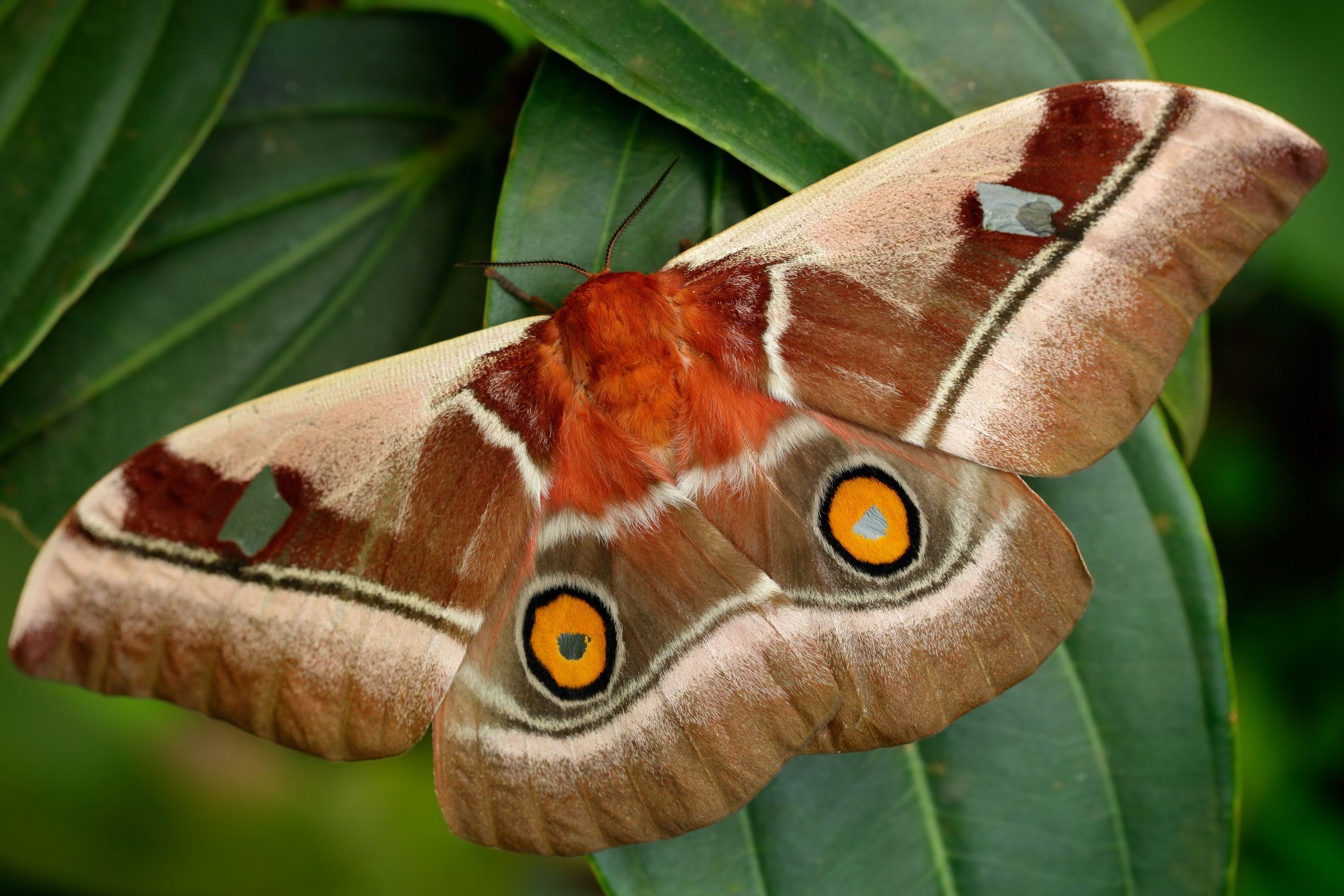Mopane worm
(Gonimbrasia belina)

Description
Gonimbrasia belina is a species of emperor moth which is native to the warmer parts of southern Africa. Its large edible caterpillar, known as the mopane worm, madora, amacimbi or masontja, feeds primarily but not exclusively on mopane tree leaves. Mopane worms are an important source of protein for many in the region. The species was first described by John O. Westwood in 1849. The moths are large with a wingspan of 120 mm. Wings are fawn coloured through shades of green and brown to red, with two black and white bands isolating the eyespots. An orange eyespot is present on each hindwing. Males moths have feathery antennae, which are used to find a mate. Larvae are black, peppered with round scales in indistinct alternating whitish green and yellow bands, and armed with short black or reddish spines covered in fine white hairs. Widespread. Very common in semi-desert, bushveld and grassland. Larvae eat a wide range of plants including mopane, Carissa grandiflora, Diospyros, Ficus, Rhus, Sclerocarya caffra, Terminalia and Trema. Mopane worm outbreaks defoliate shrubs, depriving game of browse. Like most caterpillars, the mopane worm's life cycle starts when it hatches in the summer, after which it proceeds to eat the foliage in its immediate vicinity. As the larva grows, it moults four times in its five larval stages, after which the mopane worm is considered most desirable for harvesting. Provided that the larva has not been harvested after its fourth moult, it burrows underground to pupate, the stage at which it undergoes complete transformation to become the adult moth. This stage happens over winter, for a duration of 6 to 7 months, whereafter it emerges at the beginning of summer (November or December). The adult moths live only for three to four days, during which time they mate and lay their eggs. Like many animals lower down on the food chain, the mopane worms and their eggs often fall prey to various predators as well as disease. Often, more than 40% of a mopane worm's eggs will be attacked by various parasites, and the caterpillars themselves are susceptible to infection from a virus that has a high mortality rate. The worms' main predators are various birds and humans, which rely on the caterpillars for sustenance.
Taxonomic tree:







